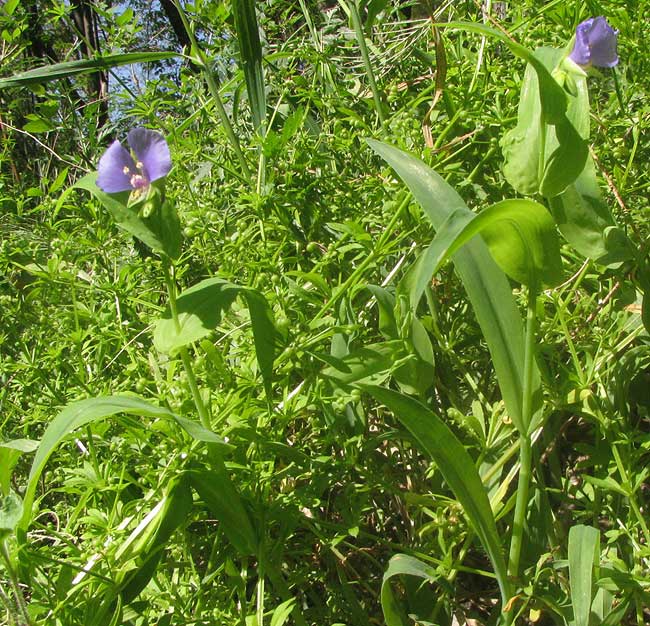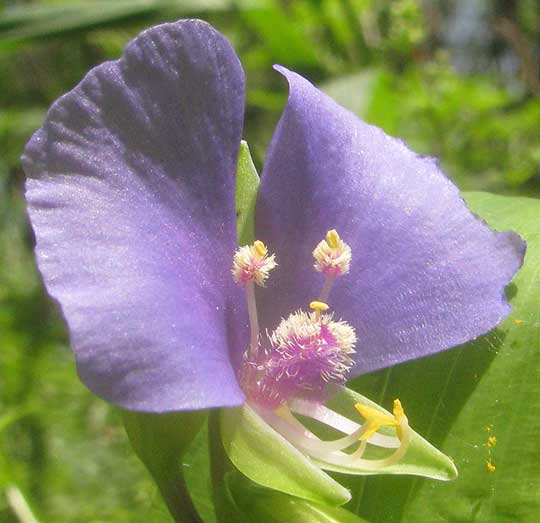Excerpts from Jim Conrad's
Naturalist Newsletter

from the April 6, 2014 Newsletter issued from the Frio Canyon Nature Education Center in the valley of the Dry Frio River in northern Uvalde County, southwestern Texas, on the southern border of the Edwards Plateau; elevation ~1750m (~5750 ft); N29.62°, W99.86°; USA
FALSE DAYFLOWER
Uvalde's Memorial Park with ponds and shady, winding paths is as pretty and well maintained as you could wish, but down at the far end along the little Leona River's banks, a little part doesn't get mowed, the vegetation is lush, and at this time of year when winter is such a fresh memory, that green, rampant lushness is good to see. The usual weeds are to be found there, but one caught my special attention, shown above.
With its broad, grass-like leaves and purplish flowers with bilateral symmetry looking like little doll faces with bulging eyes and whitish mouthparts, an average wildflower sniffer instantly recognizes this as one of several weedy dayflower species. However, back at Juniper House when the pictures were on the laptop, I was shocked to see something extraordinary in the flower close-up. See if you can spot it in the picture below:

I didn't recall flowers on dayflower species being so long-hairy on their stamen filaments. Moreover, the online Flora of North America description for the dayflower genus, Commelina, states flatly that in dayflower blossoms the filaments are "glabrous," which means "hairless." Filaments in the picture are so audaciously hairy that I went to the Flora's general key to the Spiderwort Family, the Commelinaceae, to which dayflowers belong, and keyed out the plant from the beginning.
And, behold, there was a genus I'd never heard of, practically identical to the Dayflower Genus Commelina, except that in regular dayflowers there are only three fertile stamens, while in this other genus, there are six, and while the three stamens of the dayflower have hairless filaments, this other genus' six stamens are "densely bearded," as the Flora says.
Our little Uvalde weed is TINANTIA ANOMALA, aptly known as the False Dayflower. In the whole world it occurs only in several southern and central Texas counties, and a little part of adjacent Mexico. The Flora of North America describes its habitat as "limestone talus slopes, granitic slopes, edges of woods and ravines, prefers some shade."
The genus Tinantia is home to about fourteen species, of which only our False Dayflower occurs in North America, the other species being limited to tropical America, especially from Mexico to Nicaragua. The False Dayflower represents the genus Tinantia's effort to diversify into cooler regions.
What a pleasure to discover that what at first seemed very ordinary was in fact something I'd never seen!